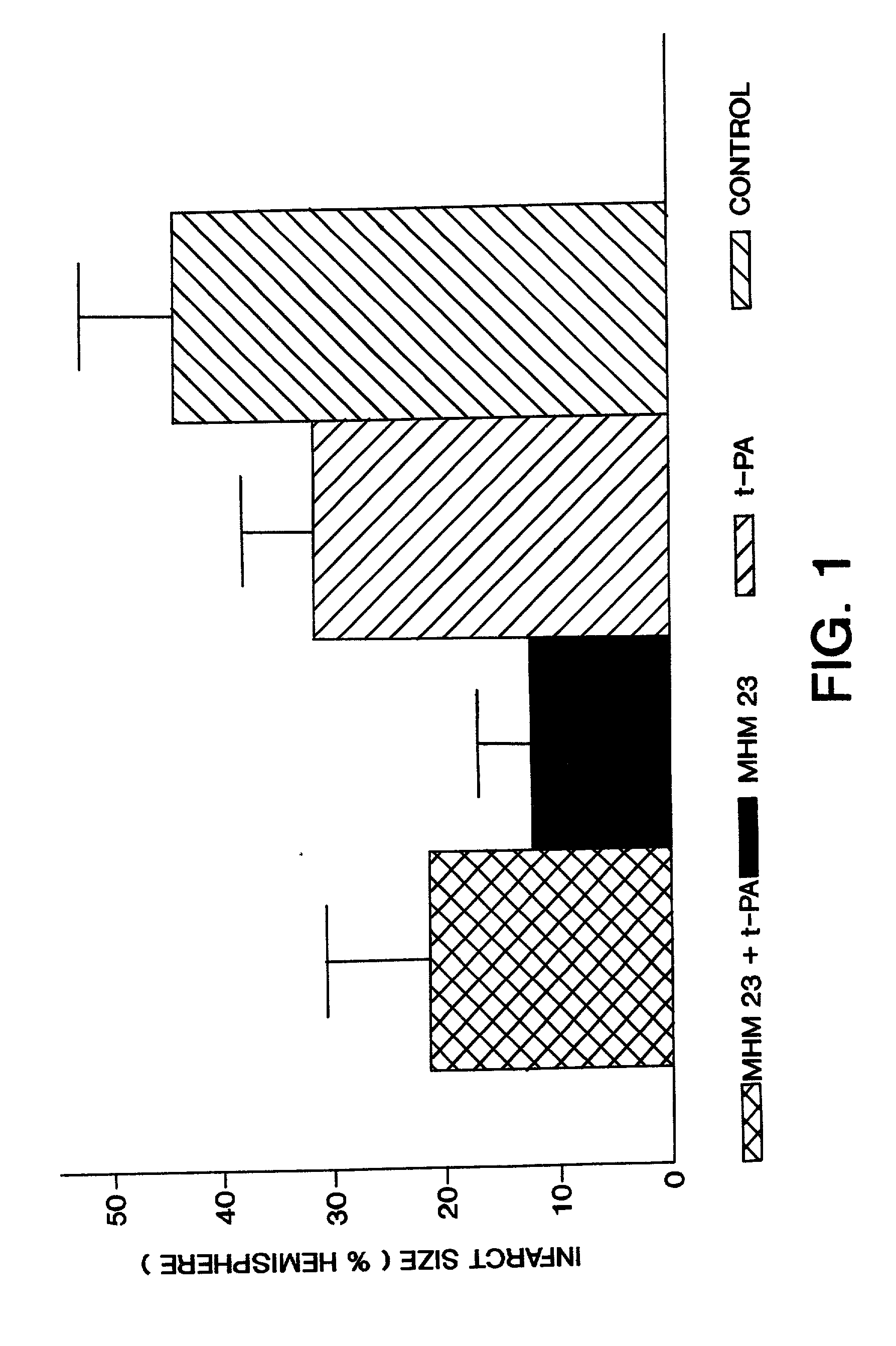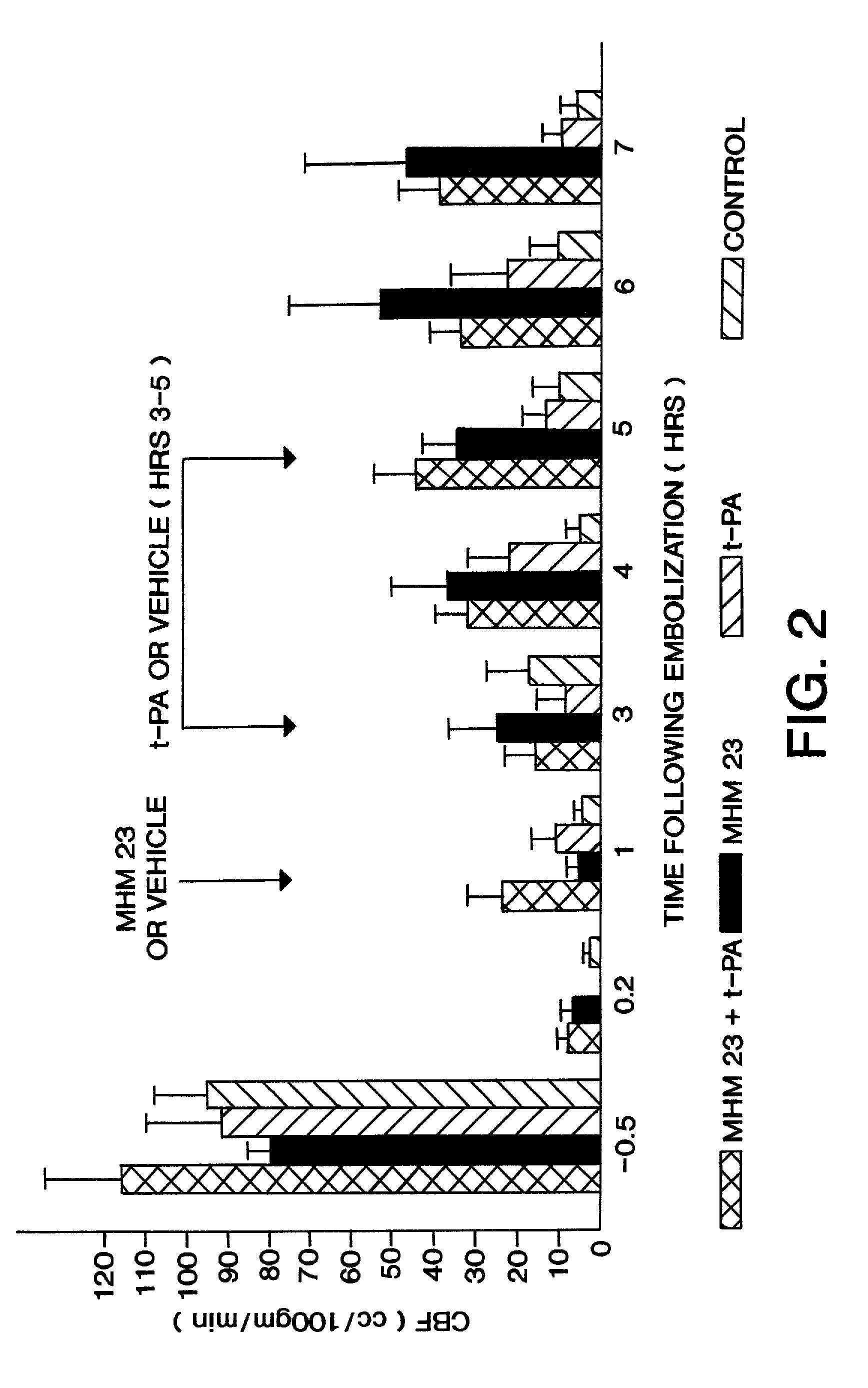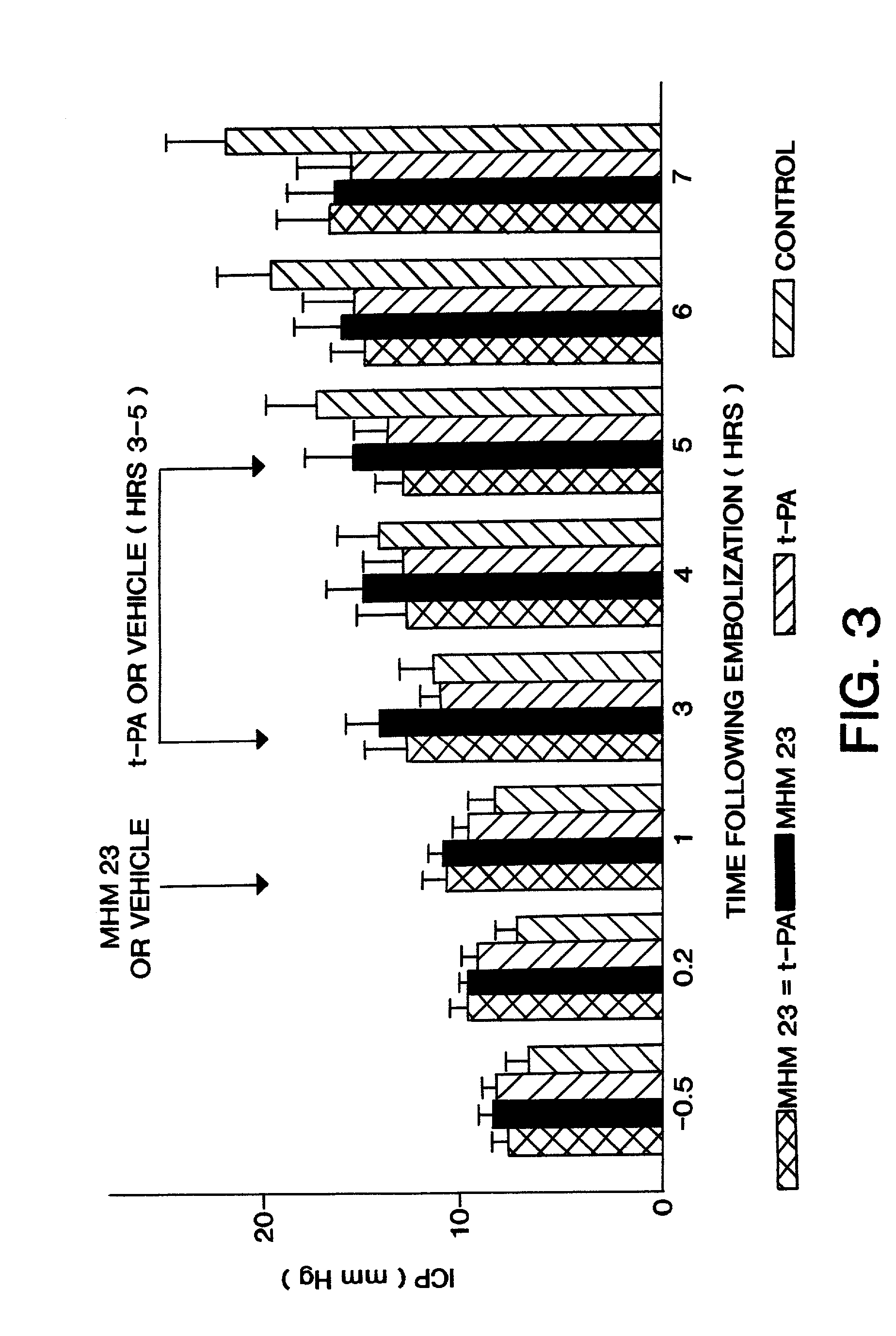Co-administration of a thrombolytic and an anti-CD18 antibody in stroke
a technology of anticd18 and thrombolytic, which is applied in the field of anti-cd18 antibodies for treating stroke, can solve the problems of increasing cerebral blood flow, reducing the size of infarct, and serious problems for society
- Summary
- Abstract
- Description
- Claims
- Application Information
AI Technical Summary
Problems solved by technology
Method used
Image
Examples
example
[0126] This study investigated the effect of anti-CD18 antibody (MHM23) and t-PA in a rabbit model of thromboembolic stroke. In this model, a single blood clot is introduced into the middle cerebral and posterior communicating arteries (which are "main cerebral arteries"). The arterial obstruction (i.e., the dot) remains in place throughout the experiment (unless it is enzymatically removed by t-PA). The following rabbit model is thought to correlate well with the physiological progression of thromboembolic stroke in humans.
Materials and Methods
[0127] The rabbit model of thromboembolic stroke used in the current study has been previously described in detail (Bednar et al., Neurol. Res., 16:129-132 (1994); Gross et al., Stroke, 24:558-562 (1993); Kohut et al., Stroke, 23:93-97 (1992); Wilson et al., Neurosurgery, 31:929-934 (1992)). See, also, Gross et al., Neurosurgery, 36(6):1172-1177 (1995).
[0128] Briefly, New Zealand white rabbits (Charles River, Calif.) (both males and females; ...
PUM
| Property | Measurement | Unit |
|---|---|---|
| Time | aaaaa | aaaaa |
| Flow rate | aaaaa | aaaaa |
| Size | aaaaa | aaaaa |
Abstract
Description
Claims
Application Information
 Login to View More
Login to View More - R&D
- Intellectual Property
- Life Sciences
- Materials
- Tech Scout
- Unparalleled Data Quality
- Higher Quality Content
- 60% Fewer Hallucinations
Browse by: Latest US Patents, China's latest patents, Technical Efficacy Thesaurus, Application Domain, Technology Topic, Popular Technical Reports.
© 2025 PatSnap. All rights reserved.Legal|Privacy policy|Modern Slavery Act Transparency Statement|Sitemap|About US| Contact US: help@patsnap.com



